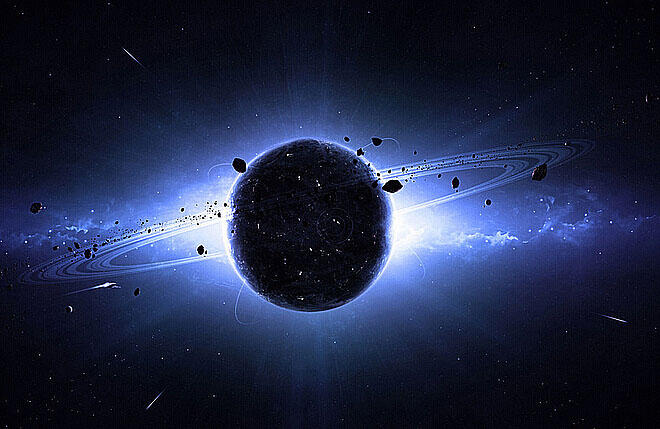The results were so unexpected, in fact, that the three scientists at first thought they had to be wrong. The amount of iridium in the Alvarez sample was more than three hundred times normal levels—far beyond anything they might have predicted. Over the following months Asaro and his colleague Helen Michel worked up to thirty hours at a stretch ("Once you started you couldn't stop," Asaro explained) analyzing samples, always with the same results. Tests on other samples—from Denmark, Spain, France, New Zealand, Antarctica—showed that the iridium deposit was worldwide and greatly elevated everywhere, sometimes by as much as five hundred times normal levels. Clearly something big and abrupt, and probably cataclysmic, had produced this arresting spike.
實際上,結果完全出人意料,三位科學家起先以為自己錯了。阿爾瓦雷斯的樣品里銥的數量竟然超過通常水準300多倍──遠遠在大家的預料之外。在此后的幾個月里,阿薩羅和他的同事海倫·米歇爾經常一口氣工作達30小時(“一旦開始,你就停不下來。”阿薩羅解釋說),分析樣品,總是得出同樣的結果。他們還測試了來自別的地方──來自丹麥的、西班牙的、法國的、新西蘭的、南極洲的──樣品。結果表明,銥的沉積是世界性的,數量到處都很大,有時候多達通常水準的500倍。顯然,突然發生過什么大事,很可能是災難性的事,才產生了這樣令人矚目的示蹤同位素。

After much thought, the Alvarezes concluded that the most plausible explanation— plausible to them, at any rate—was that the Earth had been struck by an asteroid or comet.
經過反復思考以后,阿爾瓦雷斯父子得出結論,最說得通的解釋──反正在他們看來是說得通的,是一顆小行星或彗星撞擊了地球。
The idea that the Earth might be subjected to devastating impacts from time to time was not quite as new as it is now sometimes presented. As far back as 1942, a Northwestern University astrophysicist named Ralph B. Baldwin had suggested such a possibility in an article in Popular Astronomy magazine. (He published the article there because no academic publisher was prepared to run it.) And at least two well-known scientists, the astronomer Ernst Opik and the chemist and Nobel laureate Harold Urey, had also voiced support for the notion at various times.
地球有時會遭到破壞性極大的撞擊,這種看法并不像現在有時候會覺得的那么新鮮。早在1942年,西北大學的天文學家拉爾夫·B·鮑德溫已經在《通俗天文學》雜志上的一篇文章里提出了這種可能性。(他的文章之所以發表在這本雜志上,是因為沒有哪個學術出版社愿意經營這類雜志。)至少有兩名科學家──天文學家恩斯特·奧皮克和化學家、諾貝爾獎獲得者哈羅德·尤里──也在不同的時刻對這種見解表示支持。












